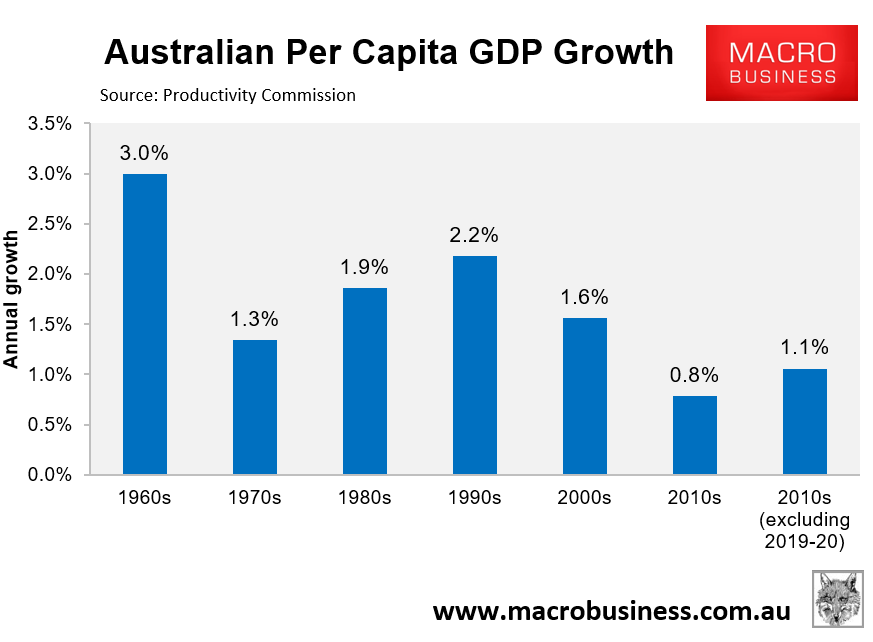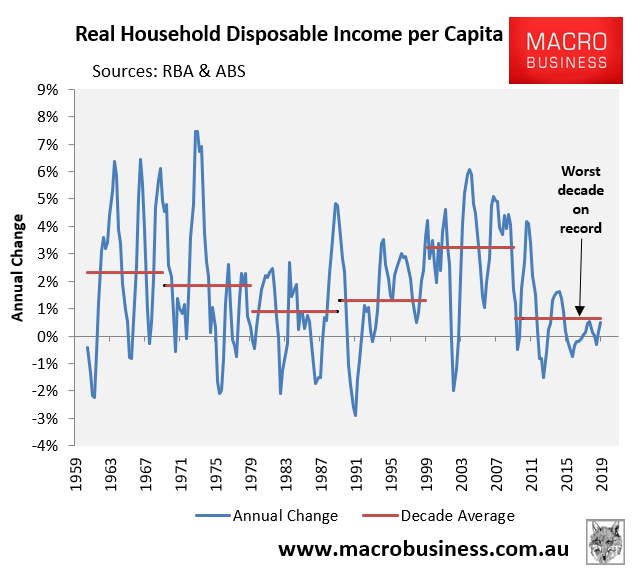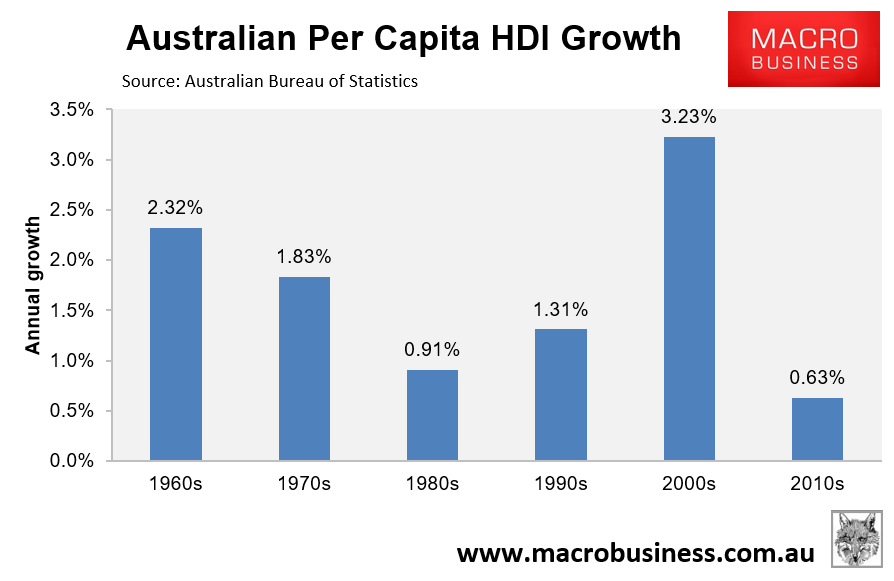2022 has only just begun and already the vested interests are demanding a massive lift in Australia’s migrant intake.
The latest special pleading comes from KPMG, which has demanded net overseas migration (NOM) be lifted to a record high 350,000 people a year this decade to make up for the ‘lost’ immigration over the COVID pandemic:
Ramping up net migration levels to 350,000 a year to make up for the collapse in overseas arrivals during the pandemic would boost the economy by an extra $120bn and raise GDP by 4.4 per cent by the end of the decade, exclusive KPMG analysis reveals.
As business groups demand for the annual cap on permanent skilled migration to be lifted from 160,000 people to 200,000, KPMG chief economist Brendan Rynne argued the nation would be better served by adopting a more aggressive approach to attracting migrants over the 2020s.
Dr Rynne said net overseas migration added 10 per cent to the size of the population over the decade to 2019, and that the federal government should be targeting a similar contribution over the 10 years to 2029.
If Australia wanted to match the same 10 per cent growth in population through international migration, then net overseas migration would need to total about 2.56 million between 2020 and 2029…
The KPMG analysis shows Australia would need to increase its net migration levels by about 50 per cent versus the Population Statement forecasts in order to match the decade to 2019.
Dr Rynne recognised that substantially ramping up net migration levels to 350,000 people a year from now until 2029 seemed like “a lot”, but he argued that a Bigger Australia approach was ultimately in the national interest…
“I am absolutely a supporter of increasing migration to Australia and at levels above what is in the Population Statement to ensure not only that we get the economic benefits, (but also) the social and cultural benefits you get from opening your borders and allowing a truly multicultural society,” Dr Rynne said.
The only key economic variable negatively correlated with higher migration levels was real – or after inflation – wages.
Dr Rynne said the “first order” impact of higher population growth was to increase the supply of workers, “which is a moderating factor on wages”…
The 2010s was the worst decade for Australian per capita GDP growth in 60 years of data, even excluding the impacts of the 2019-20 COVID recession:

It is a similar story for real per capita household disposable income (HDI), with the 2010s recording the weakest decade of growth in data dating back to the 1960s:

The next chart plots the same data in decade average terms and shows just how poor real per capita HDI growth was over the 2010s:

Given “net overseas migration added 10 per cent to the size of the population over the decade to 2019”, and this resulted in such poor outcomes, it makes no sense repeating the same policy again, especially given the many downsides not captured in the headline data (e.g. worsening congestion, having to live in smaller and more expensive housing, and environmental degradation).
Meanwhile, the Grattan Institute’s Brendan Coates has repeated the canard that boosting immigration will ‘save’ the budget:
“Migrants, especially skilled migrants, boost Australian GDP per person.
“Yet migrants, who have tended to be higher skilled capture much of the increase in GDP themselves via their incomes. The big benefit from migration, especially skilled migration, is the fiscal dividend they generate for the Australian community because they pay more in taxes than they receive in public services and benefits over their lifetimes.”
Dr Coates cited recent Treasury analysis that showed that the average permanent migrant provided a fiscal dividend of $41,000 over their lifetime since they paid more in tax than they received in publicly funded services.
Treasury’s model used to calculate fiscal impacts from migration deliberately ignores costs imposed on state budgets from providing the many goods and services required to sustain bigger populations (e.g. infrastructure, education and social services), as well as the additional ‘private taxes’ (eg user-pays tolls paid to private companies) imposed on the general public:
The OLGA [OverLapping Generations model of the Australian economy] and FIONA [Fiscal Impact of New Australians] results presented in this report do not capture the broader economic, social or environmental effects of migration such as technology spillovers or congestion. The FIONA results presented here do not capture the fiscal impacts of migration on state or local governments.
Thus, the Treasury never takes proper account of the costs of big migration – either financial or non-financial – since these are borne primarily by the states and residents at large.
This explains why Treasury’s Intergenerational Report banged on incessantly about the rise in healthcare and pension costs from population ageing, but completely ignored the gigantic cost of infrastructure required to house an additional projected 13.1 million people over the next 40 years – the equivalent of adding another Sydney, Melbourne and Brisbane to Australia’s existing population. These infrastructure costs are borne by the state governments and residents (via user charges), so are dismissed altogether by Treasury.
I bet if the federal government was required to internalise the cost of immigration by paying the states $100,000 per permanent migrant that settles in their jurisdiction, so that the states can adequately fund the extra infrastructure and services required, then Treasury would no longer tout the ‘fiscal benefits’ of immigration.
Making the federal government share the benefits and costs of immigration would be a surefire way of reducing the intake back to sensible and sustainable levels.
Besides, most Australians do not want a return to pre-COVID levels of immigration, as evidenced by recent opinion polls.
Australians recognise that the mass immigration program of 2005 to 2020 was managed appallingly and crush loaded everything in sight, resulting in widespread infrastructure bottlenecks across Australia’s major cities and reduced liveability.
Sadly, the shills at KPMG shamelessly represent vested interests in the business lobby rather than the Australian people.

